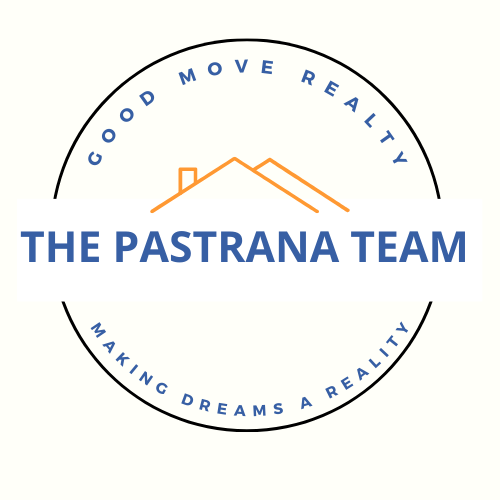

With a population of approximately 387,750, Minneapolis is the largest city in Minnesota, and ranks as the 48th largest in the nation. It takes up parts of both banks of the mighty Mississippi River, and is connected to the state’s capital city, Saint Paul, by a series of bridges that span the river near each city’s downtown area. Together, Minneapolis-Saint Paul, colloquially referred to as the Twin Cities, are home to more than 3 million people, making it the country’s 16th-largest metro area.
Incorporated in 1867 and named after the Dakota Sioux American Indian word, “Minnehaha,” which translates loosely into “waterfall,” the city of Minneapolis covers nearly 60 square miles, including 3.5 square miles of water. It’s fitting that the city bears a moniker culled from the Dakota Sioux language, since they had the region pretty much to themselves until about 1680, when French explorers wandered into it.
Minneapolis real estate offers all of the amenities, conveniences and opportunities that most heavily populated urban areas offer; however, there are a number of features inherent to the area that set the city apart from the rest. The most prominent of these is water. And it should come as no surprise that the biggest city in the state that bills itself as the “Land of 10,000 Lakes” would serve to showcase this gift from Mother Nature.
Downtown Minneapolis offers the shopaholic in you a little bit of everything. It’s home to eclectic shopping centers, like Calhoun Square, Gaviidae Common (in some the city’s magnificent skyways) and Nicollet Mall; and high-end department stores, like Macy’s, Saks Off Fifth and Neiman Marcus.
One cannot talk about shopping in the Twin Cities without mentioning the Mall of America. Just a short 15 or so miles south of downtown Minneapolis, the Mall of America offers more than 520 stores, virtually countless restaurants, a huge, multi-screen movie theater, an amusement park and much more.
There are so many top-notch restaurants peppering the neighborhoods that make up Minneapolis real estate that you could fill an entire restaurant guide with them and still not capture all of them. Even so, check out these Minneapolis restaurant guides for some suggestions on where to start:
The city also offers some of the nation’s finest art venues and museums, including, but not limited to, the Minneapolis Institute of Arts, Katherine Nash Gallery, The Museum of Russian Art, Walker Art Center and the Weisman Art Museum.
The City of Minneapolis manages and maintains more than 180 parks, including its popular Chain of Lakes and the 13.3-mile multi-use pathway that encircles it. This is just one stretch of the nearly 50 miles of smooth, paved trails snaking their way through the city’s diverse neighborhoods. Adding to the city’s overall park-like aura, five magnificent golf courses reside inside its borders, with world-class private clubs, like Hazeltine National Golf Club and Interlachen Country Club a short drive away.
The Minneapolis Park & Recreation Board manages and maintains 49 neighborhood recreation centers, which are open year-round and offer an incredible variety of programs and activities for all ages. The following list gives you a tip-of-the-iceberg look at what’s all available to you thanks to the City of Minneapolis:
Within the friendly confines of the city of Minneapolis you will discover more than 20 natural lakes and wetlands, numerous creeks and several rivers in addition to the Mississippi. Along with mature trees, and a preponderance of green and open spaces, water in its various forms creates a serene urban park environment in which one can shut out the hustle and bustle of city life for a while.
Once a thriving timber hub and the flour milling capital of the world, Minneapolis remains one of the country’s chief business centers in the primarily prairieland, farmland and forestland between Chicago and Seattle. It boasts five Fortune 500 companies’ headquarters, including Target, U.S. Bancorp, Xcel Energy, Ameriprise Financial and Thrivent Financial for Lutherans.
Like most large cities, Minneapolis is split into several neighborhoods, each with its own unique personality and aura. These neighborhoods are Downtown, North, Northeast, South and Southwest.
One other enviable attraction Minneapolis offers that even some of the nation’s much larger cities can’t is a team for which to cheer in each major professional sports league: the NFL’s Minnesota Vikings, Major League Baseball’s Minnesota Twins, the Minnesota Timberwolves of the NBA, and the National Hockey League’s Minnesota Wild, which plays its home games in Saint Paul.
Minneapolis Public Schools provides primary and secondary public education for about 36,370 students across 45 elementary schools, seven middle schools, seven high schools, eight special education schools, eight alternative schools, 19 contract alternative schools and five charter schools.
In 2009, U.S. News & World Report ranked four of Minneapolis’ seven hospitals among the best in America. Those four are Abbott Northwestern Hospital (part of Allina), Children’s Hospitals and Clinics, Hennepin County Medical Center (HCMC) and the University of Minnesota Medical Center, Fairview. The other three hospitals – Minneapolis VA Medical Center, Shriners Hospitals for Children and Allina’s Phillips Eye Institute – are also outstanding in their own way. Also, the world renowned Mayo Clinic is only about 75 minutes away in Rochester, Minnesota.
Twin Cities residents have convenient access to just about every type of transportation alternative you could want. Taxis, various bus lines, and the area’s relatively new light rail system are just few of the options for those seeking mass transit. The Minneapolis-St. Paul International Airport lies about 15 miles southeast of downtown.
Several major U.S. and state highways carve their way through or skirt around the myriad Minneapolis real estateproperties, such as Interstates 94 and 35, and the 494, 694 bypass loop that encircles the Twin Cities metro area. Also, those 50 odd miles of paved trails zig-zagging through the metro remain in steady use, even over the winter, which made Minneapolis second in the U.S. in highest bicycle commuter percentage.
Check out these links for even more transportation options: